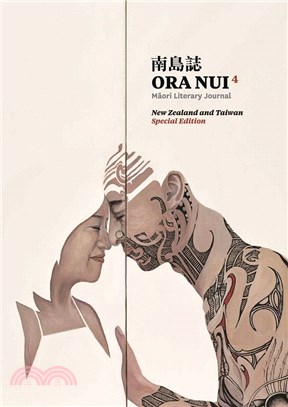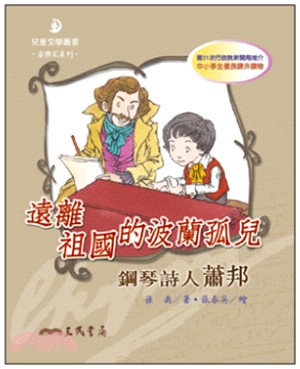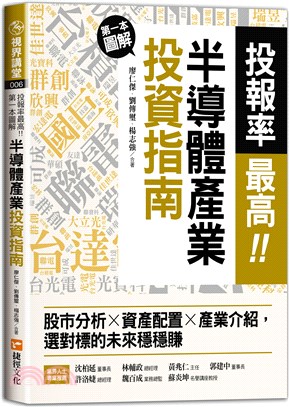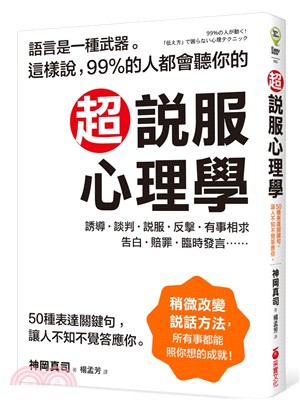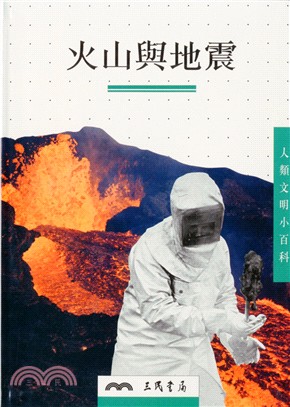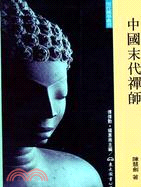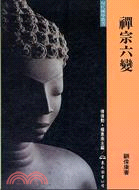南島誌 Ora Nui-4 (New Zealand& Taiwan Special Edition)
- 系列名:書林叢書
- ISBN13:9789574459049
- 出版社:書林
- 作者:Anton Blank
- 裝訂/頁數:平裝/336頁
- 規格:24.5cm*17.5cm*1.5cm (高/寬/厚)
- 出版日:2020/12/18
商品簡介
根據南島民族遷移理論,毛利人的祖先源於廣泛播遷的台灣原住民部落。因為民族遷徙,紐西蘭和台灣的原住民有著家系、語言和文化上的關聯。作為一本毛利文學期刊,本期《Ora Nui 南島誌》特別具開創性,將台灣和紐西蘭原住民作家及藝術家的作品並陳,呈現豐富的短篇小說、詩、散文、非文學及視覺藝術等作品。
According to the widely accepted Austronesian Migration Theory, the M?ori people of New Zealand descend from the indigenous tribes of Taiwan, whose ocean-going sailing technologies meant they were able to migrate widely. As a result of this movement of people, New Zealand and Taiwan share genealogical, linguistic, and cultural connections. In this ground-breaking special edition of the M?ori literary journal Ora Nui, writings and artworks by the Indigenous peoples of New Zealand and Taiwan are presented side-by-side. The resulting journal is a rich offering of short fiction, poetry, creative non-fiction, essays, and visual art from more than 50 contributors.
序
前言/序摘要:
本書具有深厚藝術性,結合台灣原住民與紐西蘭毛利族的各形式創作精華,堪稱獨一無二的瑰寶。根據南島民族遷移理論,毛利人與玻里尼西亞、東南亞、甚至馬達加斯加的南島民族系出同源。台灣與紐西蘭的南島民族都尊敬無所不在的祖靈、珍視神話傳統,並注重與自然環境的共榮。若您閱讀本期雜誌,會發現可深入探索的共通點還有更多,帶有魔幻寫實的作品呈現,即使在現代台紐異文化的隔閡下依舊能有共感。期待這樣的文化交流/尋根能繼續彼此激盪。
Foreword
This issue of Ora Nui is a jewel; light dances across the words and images sparking joy and wonder. It is filled with contributions from my favourite Māori and Taiwanese writers and artists. The book is an objet d’art. The art contributions are adrenal rushes between the text. The sensory engagement with books, and our enjoyment of the experience means that we will always love the paper page.
According to the theory of Austronesian migration, Māori descend from the Indigenous tribes of Taiwan, who migrated widely. The migration means that Māori share a lineage with the peoples of Polynesia, Southeast Asia, West New Guinea and Madagascar. This is an aspect of the Māori history that I seldomly hear about.
Over a number of years, I attended the Taipei Book Fair and met Su Shin, who has edited the Taiwanese contributions in this issue of Ora Nui. Su Shin has Indigenous Taiwanese heritage; so too does 60% of the Taiwanese population. We were both interested in exploring this shared history of our origins, and planned our way towards this project.
The tropes of Indigenous writing are present across this collection. The omni-presence of whakapapa and lineage, indigenous engagement with the environment, the importance of mythology. The themes play out across our contemporary experience. There’s amagic-realistmood too. As you read the work, you’ll get a sense that there’s something more going on here.
New Zealand editor Kiri Piahana-Wong has co-ordinated the project, and pulled everything together to forma whole. She has impeccable instincts and over the last two issues of Ora Nui, has elevated the quality of the journal. When I think about the make-up of this team of three, and the Indigenous diversity that we represent, it’s a life imitating art moment.
No reira tēnā koutou kātoa.
Anton Blank
Publisher
-----------------------------
Introduction—Taiwan
Taiwan has been subjected to a complicated history that means today it is home to a diverse set of communities. Living here are people from the sixteen officially recognized Indigenous tribes, people whose ancestral histories trace through several waves of migration from dynastic-era China, people who migrated from20th century China, and—most recently—people who have migrated from Indonesia, Vietnam, and various other places. Many or even most of the people living in Taiwan have families which span multiple of these four main groups, and—of course—among Taiwan’s nearly 24million inhabitants there are countless other smaller constituencies.
It was at Taipei Book Fair a few years ago that I first met Anton Blank and heard about Ora Nui. I had read about the Austronesian Migration Theory prior to that encounter, and I knew that many thousands of years ago, people who had been living in Taiwan sailed southward to modern-day Indonesia, the Philippines, Hawaii, and—eventually—all the way to New Zealand. Despite this understanding, however, I had not considered the extent to which, as a result of this migration, Taiwan and New Zealand share genealogical, linguistic, and cultural connections. So after some enlightening conversations, I decided to join Anton in presenting a collection of art and literature from Taiwan alongside comparable works from New Zealand.
Now, in this journal, expanding significantly upon that earlier presentation, we have collected more pieces of art, literature, and research. The subjects addressed by the contributors are many, and their works engage with topics as diverse as the aftermath of the White Terror, the maintaining of Indigenous identities in a cosmopolitan world, and the perception of new migrants by Taiwanese society. And although nothing has been chosen on the basis of political or ideological alignment, I believe that, when finished with this edition of Ora Nui, you the reader will be in possession of an empathetic understanding of the lives and histories of a great many people. Through close engagement with the journal’s fiction, visual art, and research, you will find yourself immersed in worlds of individuals and families and communities living through periods of major social and political change, and I hope that, through this experience, you will learn much about identity and customs and—maybe—a little bit more about yourself, too.
Shin Su
Editor, Taiwan
------------------------
Introduction—New Zealand
As I sit at my computer in Auckland, New Zealand, I am conscious of the Taiwanese readers who will read this journal and may possess little background knowledge of New Zealand history. I address my opening remarks largely to these readers, while also thanking my Taiwanese counterpart, Su Shin, for working with me on this project. I have found our work together illuminating and enriching, and I continue to be struck by the similarities and parallels between the lives, struggles and concerns of Indigenous peoples in New Zealand and Taiwan. I hope that readers of Ora Nui 4 will share this same experience.
One hundred and eighty years ago, in 1840,Māori and Pakeha signed New Zealand’s founding document, The Treaty of Waitangi. At that time,Māori lived in sub-groups (hapu) within larger groups (iwi) along tribal lines. The Māori population numbered 70,000 to 90,000 as at the signing of the treaty, and more than 500 chiefs signed on behalf of their peoples. At this time the Pākehā population was very small, approximately 2000 people, putting Māori overwhelmingly in the majority. Today, in 2020, the landscape has shifted dramatically. Iwi and hapu links remain at the heart of Māori identity, but most Māori live in urban areas now and many have moved abroad. A long fight has been fought over land ownership and compensation, and it is not over yet. The consequences of colonialism remain far reaching, and racism and poverty are still endemic issues for our people. And Māori make up just 16.5% of the overall population of New Zealand.
Unsurprisingly Māori writers and artists often touch on the above concerns in their work, and excellent and insightful pieces on these subjects appear in Ora Nui 4. However, in recent years there has been a noticeable shift in Māori writing, with writers feeling increasingly free to write about whatever interests them. There is no longer an expectation that we ‘must’ write about ‘Māori topics’. Thank goodness for that, as Ora Nui 4 is all the richer for creative pieces spanning an incredible range of topics, such as: a space odyssey set on Mars, a woman determined to save the dolphins, a Friday night in downtown Mongolia, an American road trip, a blossoming relationship between a screenwriter and a barista, and many more. I hope you enjoy the richness and diversity of Ora Nui 4.
Kiri Piahana-Wong
Editor, NewZealand
目次
1 Foreword
2 Introduction-Taiwan
3 Introduction-New Zealand
4 Visual arts, poetry & short fiction
5 Aziembry Aolani
7 Badai 巴代
10 Cassandra Barnett
12 Anton Blank
20 Nigel Borell
24 Jacqueline Carter
26 Gerry Te Kapa Coates
29 Gina Cole
38 Kaling Diway 陳勇昌
40 Kristy Dunn
41 Amber Esau
47 Anahera Gildea
49 Teoti Jardine
50 Robert Jahnke
54 Hinemoa Jones
58 Kelly Joseph
66 Kahu Kutia
71 Arihia Latham
74 Idas Losin 宜德思 · 盧信
76 Steve Lovett
80 Eval Malinjinnan 依法兒·瑪琳奇那
84 Faisu Mukunana 劉武香梅
91 Claudine Muru
92 Etan Pavavalung 伊誕 · 巴瓦瓦隆
98 Reretan Pavavaljung 磊勒丹 · 巴瓦瓦隆
102 Sakuliu Pavavaljung 撒古流 · 巴瓦瓦隆
109 Kiri Piahana-Wong
111 Michelle Rahu Rahu Scott
117 Vaughan Rapatahana
129 Syaman Rapongan 夏曼·藍波安
133 Aimee Ratana
137 Jean Riki
145 Reihana Robinson
148 itih a taos 根阿盛
161 Apirana Taylor
164 Stacey Teague
166 Anne-Marie Te Whiu
168 Donna Tupaea-Petero
170 Iona Winter
176
主題書展
更多主題書展
更多書展本週66折
您曾經瀏覽過的商品
購物須知
為了保護您的權益,「三民網路書店」提供會員七日商品鑑賞期(收到商品為起始日)。
若要辦理退貨,請在商品鑑賞期內寄回,且商品必須是全新狀態與完整包裝(商品、附件、發票、隨貨贈品等)否則恕不接受退貨。




